
In recent years, homeowners and architects alike have been exploring innovative options that strike the perfect balance between aesthetics, durability, and safety. Rubber flooring is emerging as a top contender in this quest, offering unmatched versatility for indoor and outdoor applications.
Whether you’re a parent pondering over the safety of your child’s play area or a homeowner mulling over the ideal flooring for your patio, rubber might be the answer you’re seeking.
This comprehensive guide dives deep into the world of rubber flooring, answering pivotal questions and presenting practical solutions for many requirements. From understanding the dynamics of placing rubber tiles over the carpet to discerning the benefits of rubber versus vinyl, this post aims to be your definitive resource. As we explore the nuances of rubber flooring, we’ll also weave in valuable external resources to ensure that every query is addressed exhaustively.
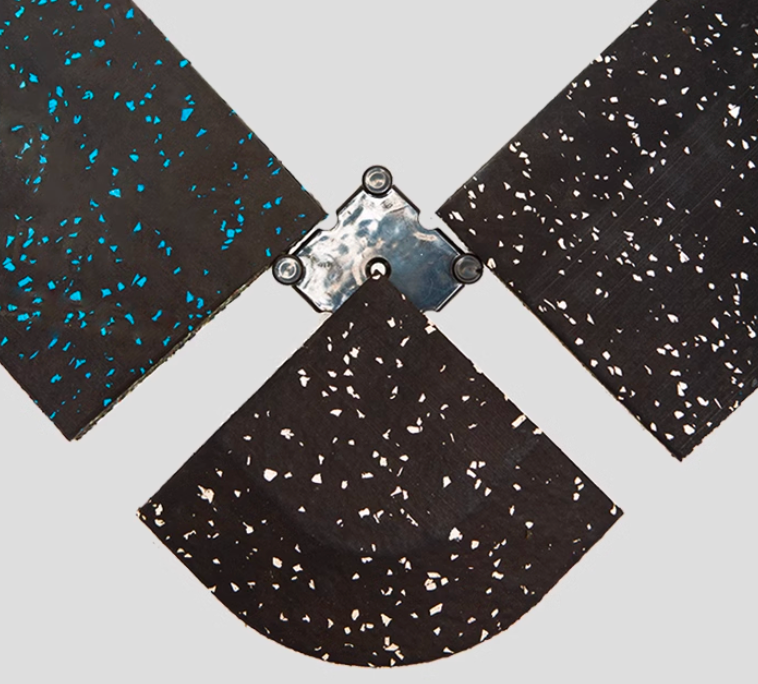
Which Flooring Options Seamlessly Transition from Indoors to Outdoors?
Contemporary homes often blend indoor and outdoor spaces, necessitating flooring that fits this fluidity. The challenge lies in finding surfaces that maintain their beauty while being functional and accessible in both realms.
The Flexibility of Tiles and Pavers:
Tiles, particularly rubber tiles for indoor applications, merge aesthetic appeal with functional durability. While they beautify room interiors, some also fit outdoors, especially when homeowners seek a consistent look. Pavers, commonly seen outdoors, are also making their way inside, particularly in homes desiring a more earthy touch.
This unity in design across spaces allows families to create a cohesive ambiance.
Aspects to Ponder for Combined Spaces:
Choosing flooring for mixed-use areas demands a thoughtful approach:
– Durability: The flooring should accommodate the furniture movement and constant foot traffic.
– Weather-Resistance: The flooring needs resilience against elements, especially for the outdoors.
– Aesthetic Harmony: Maintaining a seamless indoor and outdoor beauty enhances the overall appeal.
– Upkeep: Families prefer surfaces that are easy to clean and maintain, offering ease, especially in areas exposed to varying elements.
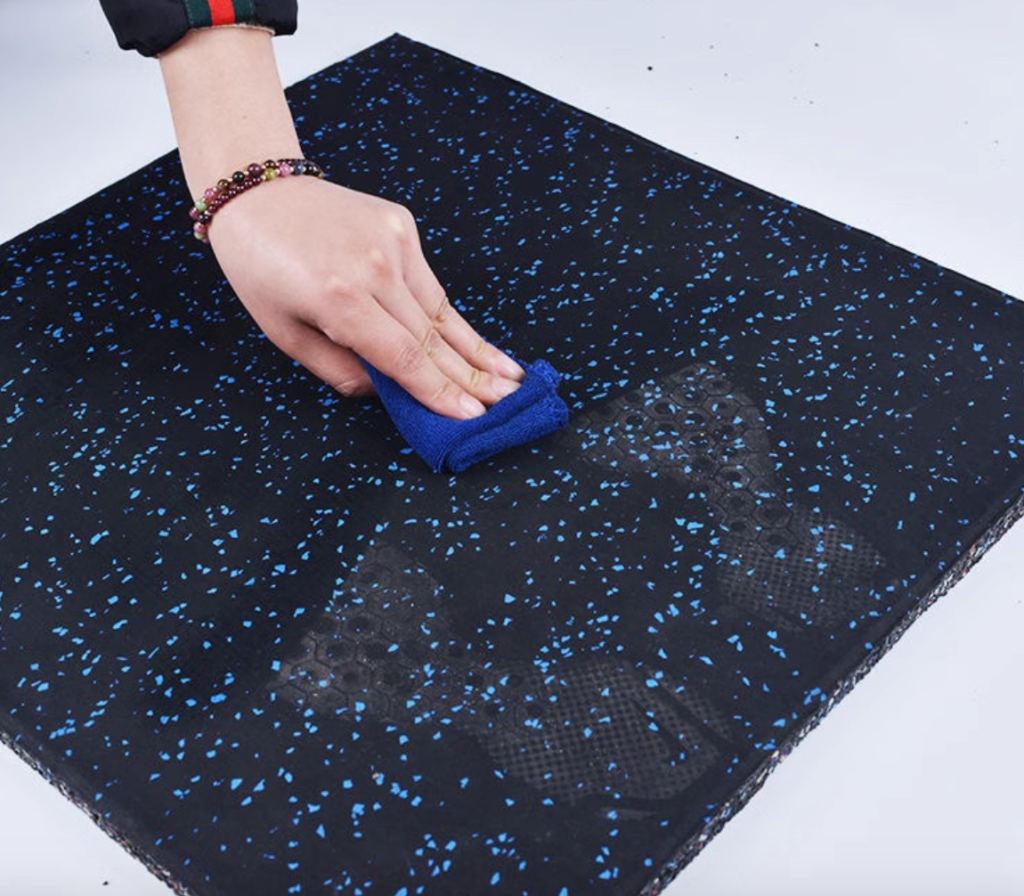
Is It Feasible to Use Indoor Tiles Outdoors?
Transitioning tiles from the comfort of the indoors to the unpredictable outdoors requires caution. Not all indoor tiles, even the durable ones, are cut out for external conditions.
Sturdiness and Environmental Factors:
Though indoor tiles, including rubber tiles for indoor setups or indoor playground flooring mats, are elegant, they might be geared for something other than the outdoors.
Outdoor tiles should be slip-resistant and resilient to weather changes. If you’re considering extending your indoor playground flooring to an outdoor section, ensure it can handle rain, sunlight, and temperature variations.
How Do Indoor and Outdoor Flooring Differ?
While indoor and outdoor tiles might seem identical, they cater to specific environments.
Material Distinctions:
Indoor flooring, from soft indoor playground flooring mats to plush carpets, might not brave outdoor conditions. Outdoor flooring, conversely, is designed for toughness, crafted from materials like stone, brick, or even artificial turf.
Application Insights:
Outdoor tiles are generally thicker, catering to weightier loads, and have rougher grip surfaces.
Indoor tiles, in spaces dedicated to playing indoors, ensure children remain safe with their smoother finishes and diverse shapes. The installation process differs too; outdoor tiles need a more intensive installation process than their indoor counterparts, which can be easier to replace or install.
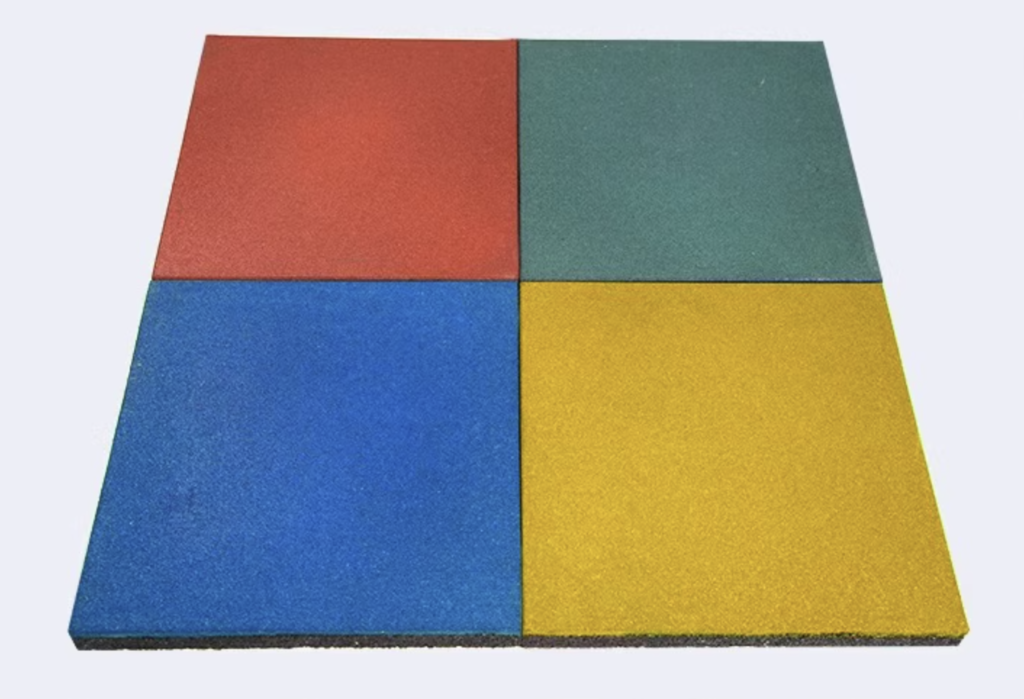
How Good is Rubber Flooring for Homes?
When selecting the right flooring for homes, the choices can be overwhelming. However, rubber flooring is rapidly gaining traction among homeowners due to its impressive benefits.
Durability and Safety Factors:
One of the foremost reasons homeowners are turning towards rubber flooring is its durability. Made to withstand heavy traffic, rubber is resilient against wear and tear, making it an excellent option for busy households.
This durability also means a longer lifespan, giving you a good return on investment. Furthermore, rubber floors have a natural grip on them. This non-slip feature enhances safety, especially in moist kitchens or bathrooms. If there’s a spill, the risk of slipping on rubber flooring is significantly lower than traditional tiles or hardwood.
Aesthetics and Variety Available:
Gone are the days when rubber flooring was synonymous with monotonous and dull designs. Today’s market offers many aesthetic choices ranging from vibrant colors to sophisticated patterns. Whether you’re aiming for a sleek modern look or a cozy rustic vibe, a rubber flooring design is tailored just for you.
The textures also add to the variety, with options from smooth finishes to those mimicking the grain of natural wood. In essence, the design possibilities with rubber flooring are virtually limitless, allowing homeowners to customize spaces while reaping the functional benefits of the material.

Are Rubber Tiles Safe for Children?
The safety of our children is paramount, and as such, any material we introduce into their environment must pass stringent safety checks. Rubber tiles, especially in the context of playgrounds or play areas, have been the subject of much scrutiny and, fortunately, have proven to be an excellent choice.
Understanding Playground Safety:
Playground safety encompasses more than just the choice of flooring. It’s about creating an environment where children can play, tumble, and explore without the looming threat of injuries. This involves ensuring the equipment is in good condition, the design minimizes hazards, and, of course, the flooring offers adequate cushioning.
How Rubber Tiles Cushion Falls and Protect Against Injuries:
Children are naturally active and prone to falls. The flooring on which they play can make a significant difference in the outcome of these inevitable tumbles. Rubber tiles, with their inherent cushioning properties, act as shock absorbers, reducing the impact of falls and minimizing the risk of serious injuries.
The tiles are often engineered to provide optimal bounce-back, so even if a child jumps or falls from a height, the rubber tile’s elasticity will help protect them. Moreover, high-quality rubber tiles’ non-toxic and hypoallergenic properties further cement their place as a top choice for children’s play areas.
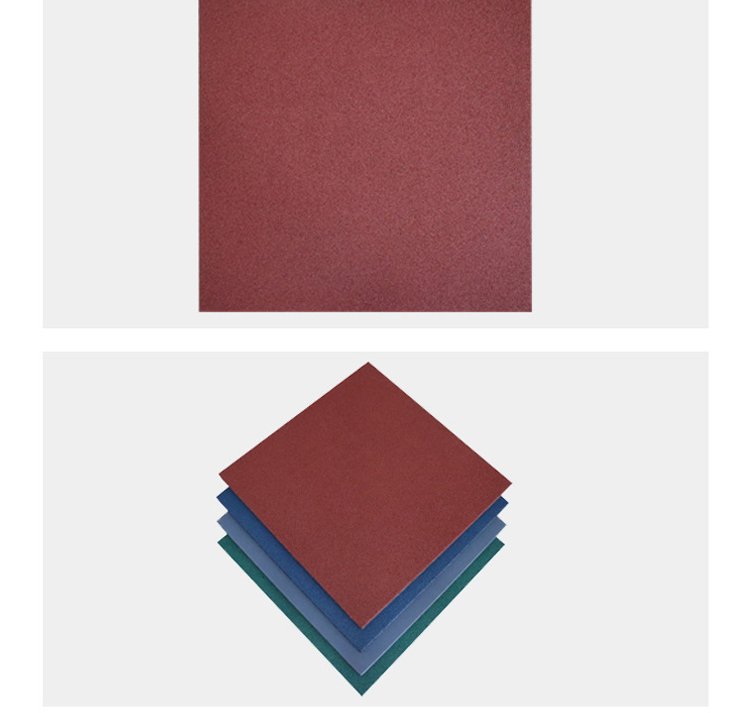
How Can You Craft a Secure and Cozy Play Area in Your Home?
Setting up a play space is more than just designing and filling an area with toys. It’s a meticulous process of shaping a zone where young ones can crawl, discover, and nurture their skills under the safety umbrella. As the trend of indoor dedicated play spots surges, the emphasis on making them safe and comfortable has intensified.
The Advantages of Soft Playground Flooring Mats:
The foundation of any play area is its flooring. Soft playground flooring mats have risen to prominence for a handful of compelling reasons:
– Cushioned Comfort: These mats offer ample padding, ensuring minor trips or tumbles don’t result in significant bruises or injuries.
– Vibrant and Varied: With various colors, patterns, and features tailored for kids, these mats can ignite a child’s imagination, making playtime even more engaging.
– Easy Cleanup: Keeping these mats dirt-free is a breeze. A quick vacuum session or wipe-down ensures a clean play setting.
– Endurance: Built for playful antics, these mats are crafted to endure the lively spirit of active children.
Steps to Curate a Safe, Kid-Friendly Play Zone:
Beyond just flooring, numerous elements transform a simple space into a child-safe haven:
– Smooth Accessibility: It’s essential to ensure that the play space is easily accessible without potential hazards.
– Safety-first Equipment: Playground equipment, from swings to seesaws, should be installed and checked regularly to prevent mishaps.
– Comfortable and Safe Furnishings: Prioritize softness and safety, from padded walls to non-slip rubber tiles indoors.
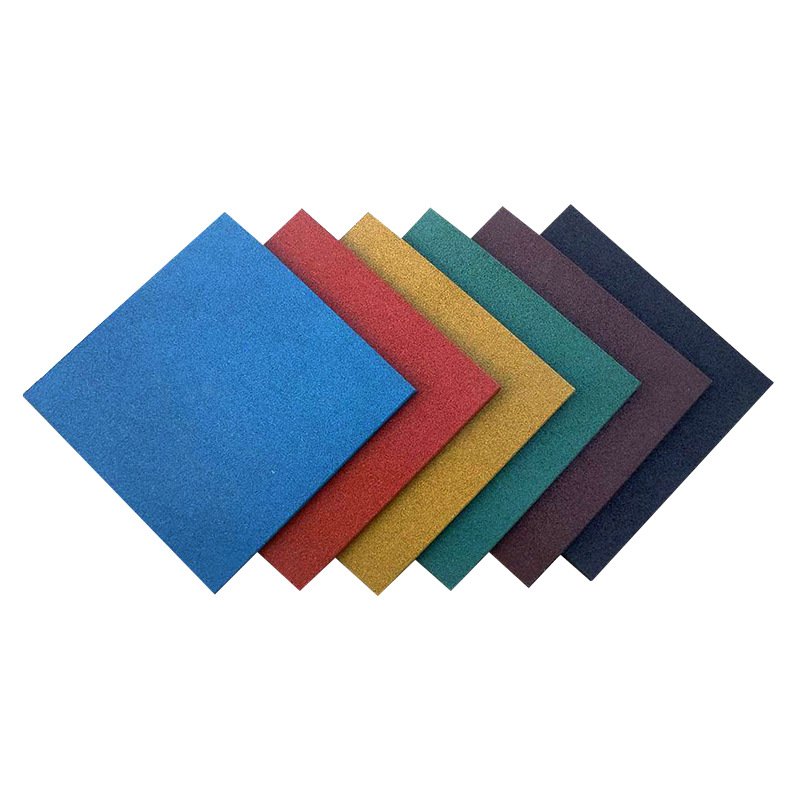
Which Flooring Choices Shine for Outdoor Play Spaces?
Indoor play corners might be a haven with soft mats, but outdoor playgrounds need a robust yet gentle flooring touch.
Exploring Artificial Turf, Rubber Tiles, and More:
– Artificial Turf: Favoured by many households, artificial turf provides the green essence of natural grass minus the upkeep. It’s plush, ensuring children are comfortable and consistent regardless of weather.
– Rubber Tiles: These are stellar options for outdoor settings. Slip-resistant and durable rubber tiles assure safety during play. They can be easily installed and are friendly to a tight budget, ensuring children stay safe without a hefty price tag.
– Traditional Choices: While sand and wood chips are old-school, they still have a place in many playgrounds, acting as natural cushioning. Regular maintenance is a must, though, to keep the area child-ready.
Incorporating the correct elements, from accessibility to the right flooring, ensures a safe playground that fits every budget and remains a comfortable space for children.
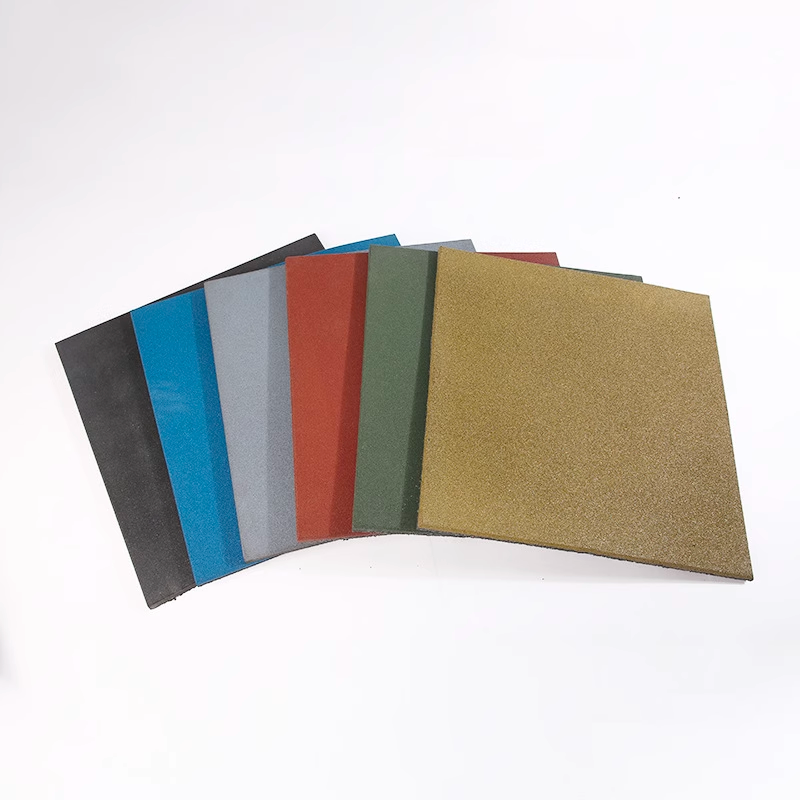
How Can Indoor Playground Flooring Be Made Safe and Durable?
The choice of flooring in an indoor playground is pivotal not only for the safety of children but also for the longevity of the play area itself.
Ensuring a safe and enduring ground becomes essential, with kids often running, jumping, and crawling. From the cushioned feel underfoot to the practicality of easy cleaning, the right flooring can make a difference.
The Role of Padding, Shapes, and Installation Methods:
– Padding for Protection: The essence of any indoor playground flooring is the padding. Adequate padding ensures that accidental trips, tumbles, or rough play don’t result in unwanted injuries. Padding provides a soft landing for those unexpected falls, making playtime safer and more comfortable for children. Moreover, the cushioned layer ensures the flooring remains resilient against the repeated impacts of playful antics.
– Shapes for Stimulation: While safety is paramount, the design shouldn’t be compromised. Introducing various shapes and patterns can stimulate a child’s cognitive development and imagination. Geometric shapes, animal designs, and even puzzles can turn the floor into an interactive play area. This not only enhances the aesthetics of the playground but also adds an educational touch to the space.
– Installation Methods for Durability: Proper installation is critical to the durability of playground flooring. Whether you opt for rubber tiles indoors, interlocking mats, or any other flooring option, ensuring they’re securely fitted and installed is crucial. Loose tiles or improperly laid mats can pose trip hazards.
Therefore, following manufacturer guidelines is essential, even considering professional installation for certain flooring types. Ensuring that edges are secure and there’s no movement during play can significantly extend the life of the flooring.
To sum it up, combining the proper padding, engaging shapes, and secure installation methods is the recipe for crafting an indoor playground that’s both safe for the kids and durable over time.
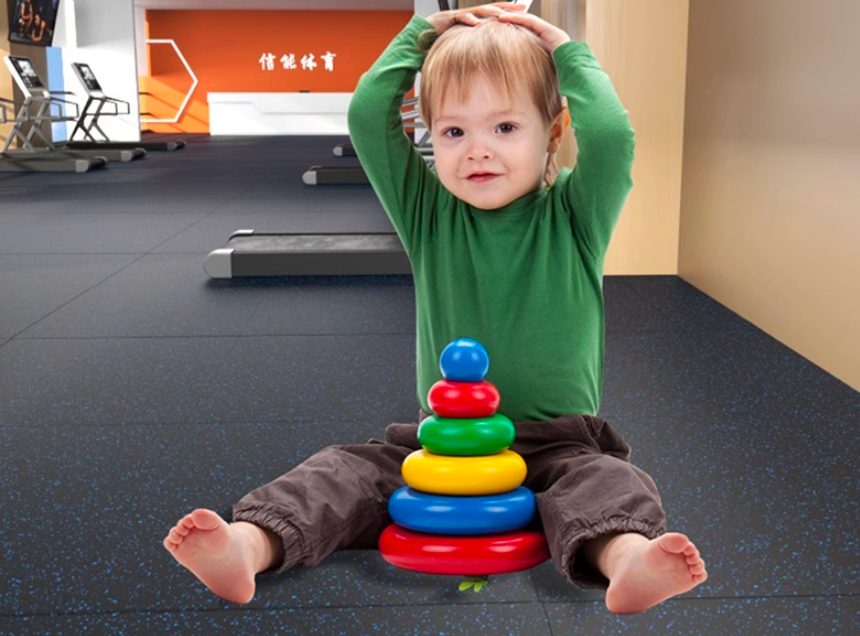
Rubber vs. Vinyl Flooring: Which is Better?
Choosing rubber and vinyl flooring often leaves homeowners and businesses with a problem. Both offer unique benefits, ensuring longevity and aesthetic appeal. But when it comes to quality, durability, and ease of cleaning, how do these two popular flooring types stack up against each other?
Quality:
– Rubber Flooring: Known for its resilience, rubber flooring offers a comfortable underfoot feel. The quality of rubber flooring depends on its thickness, texture, and overall finish. Premium rubber flooring options can provide excellent sound insulation and are also resistant to water and chemical spills.
– Vinyl Flooring: Vinyl flooring boasts impressive versatility in terms of design and patterns. Modern luxury vinyl tiles can effectively mimic the appearance of wood, stone, or ceramic, offering a high-quality finish. Plus, vinyl’s smooth surface makes it a favorite in areas where easy maintenance is a priority.
Durability:
– Rubber Flooring: Rubber inherently possesses shock-absorbent qualities, making it incredibly durable. It can handle heavy foot traffic and is commonly used in commercial settings like gyms, schools, and hospitals. Moreover, its natural resistance to water and most stains ensures it remains in top condition for years.
– Vinyl Flooring: Vinyl is known for its long-lasting nature. With a wear layer that protects against scratches, dents, and stains, vinyl flooring is ideal for residential and commercial spaces. Its ability to withstand moisture also means it won’t easily warp or buckle.
Ease of Cleaning:
– Rubber Flooring: Cleaning rubber flooring is relatively straightforward. Regular vacuuming to remove dirt and occasional mopping with a mild detergent will keep it looking fresh. However, rubber can retain scuff marks, which require more elbow grease to remove.
– Vinyl Flooring: One of vinyl’s major selling points is its ease of cleaning. Spills and stains can be wiped away without hassle. Routine sweeping or vacuuming and occasional mopping are enough to maintain its sheen. Additionally, vinyl is resistant to most common household stains.
Conclusion:
Choosing between rubber and vinyl flooring boils down to the space’s specific needs and personal preferences. Rubber might be the way to go if you prioritize comfort and sound insulation. However, vinyl flooring could be the perfect fit if you’re after a vast range of designs and easy maintenance. Both materials offer excellent durability, ensuring your floors remain in prime condition for years.

What Do You Need to Place Under Rubber Tiles?
Rubber tiles have become a popular flooring option for many, especially in gyms, play areas, and even some residential rooms. Their shock-absorbing properties and durability are commendable. However, it’s crucial to understand what needs to be placed beneath them and how to install them for optimal functionality properly.
The Importance of Cushioning and Padding:
Regarding rubber tiles, cushioning and padding play a pivotal role. While rubber is naturally cushioned, adding an extra layer of padding enhances comfort, especially in areas where people stand for extended periods. Padding is an additional shock absorber, minimizing the strain on the joints and muscles. It also adds to the insulation properties of the flooring, making the area warmer during colder months.
Ensuring Safety and Durability with Proper Installation:
A well-installed rubber tile floor will last longer and be safer. Ensuring that the subfloor is clean, dry, and level is essential. Any imperfections in the subfloor can lead to uneven tiles, reducing their lifespan and posing potential tripping hazards. Moreover, the type of underlayment chosen can impact the floor’s acoustic properties, reducing noise levels in high-traffic areas.

Do Rubber Floors Need Adhesive, or Can They Just be Laid Down?
One of the most frequently asked questions regarding rubber flooring installation revolves around using adhesives. Should the tiles be glued down, or can they lay flat without adhesive? Let’s delve into this.
Pros and Cons of Gluing Down Rubber Flooring:
Pros:
– Stability: Gluing down rubber tiles ensures they remain in place, reducing the risk of tiles shifting due to foot traffic or heavy equipment.
– Seamlessness: Using adhesive can make the seams between tiles less noticeable, providing a more uniform appearance.
– Longevity: Properly glued tiles can last longer as there’s less wear and tear on the edges.
Cons:
– Permanent: Removing or replacing tiles becomes a challenge once glued down.
– Preparation: The subfloor needs thorough cleaning and must be free from moisture. This can be time-consuming and might require additional costs.
Alternative Installation Methods:
For those hesitant about using adhesive, there are alternatives:
– Interlocking Tiles: These tiles fit together like puzzle pieces and don’t require any glue. They’re easy to install and replace if needed.
– Loose Lay: Some rubber tiles are heavy enough to lay flat without shifting. They can be laid down, especially in smaller spaces or where walls or fixtures border the tiles.
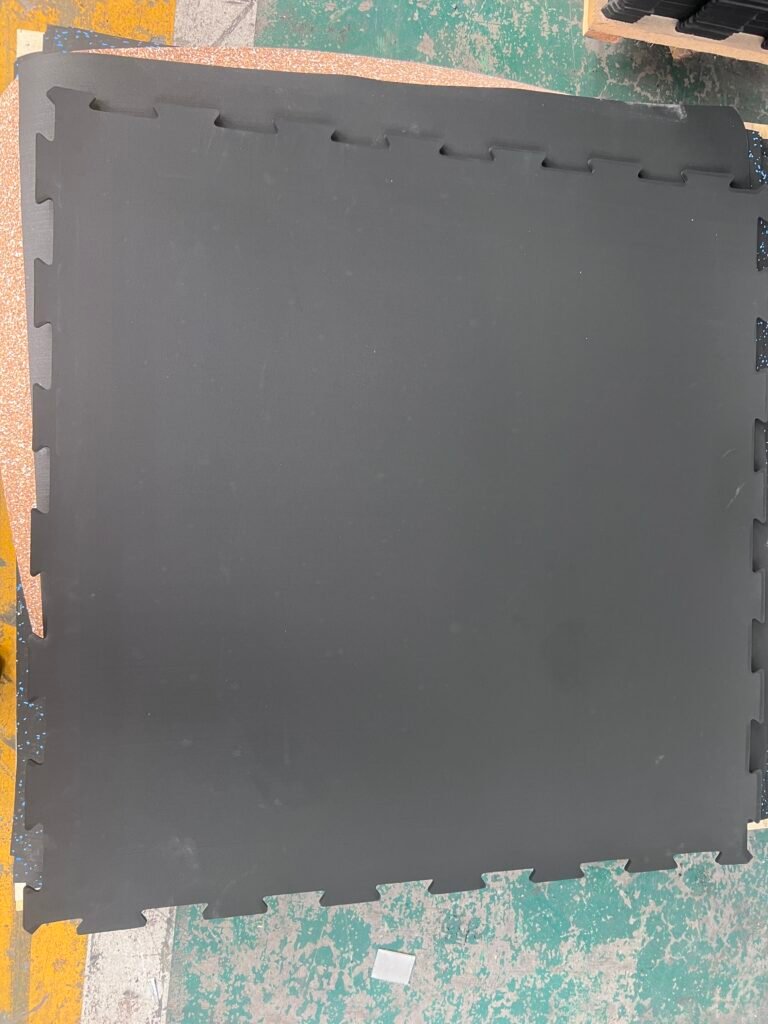
In conclusion, whether or not to use adhesive for rubber tiles depends on the specific needs of the installation area, the type of tiles chosen, and personal preferences. Both methods have merits, and understanding their advantages can help make an informed decision.
Choosing the right flooring solution requires careful consideration of both aesthetics and functionality. Rubber tiles offer a unique blend of comfort, durability, and safety, especially when installed precisely.
By understanding the nuances of padding, underlayment, and installation methods, homeowners and businesses can optimize the longevity and efficacy of their floors. Whether considering the cushioning beneath or the adhesive process, always prioritize the end goal: a floor that serves its purpose while ensuring comfort and safety.


